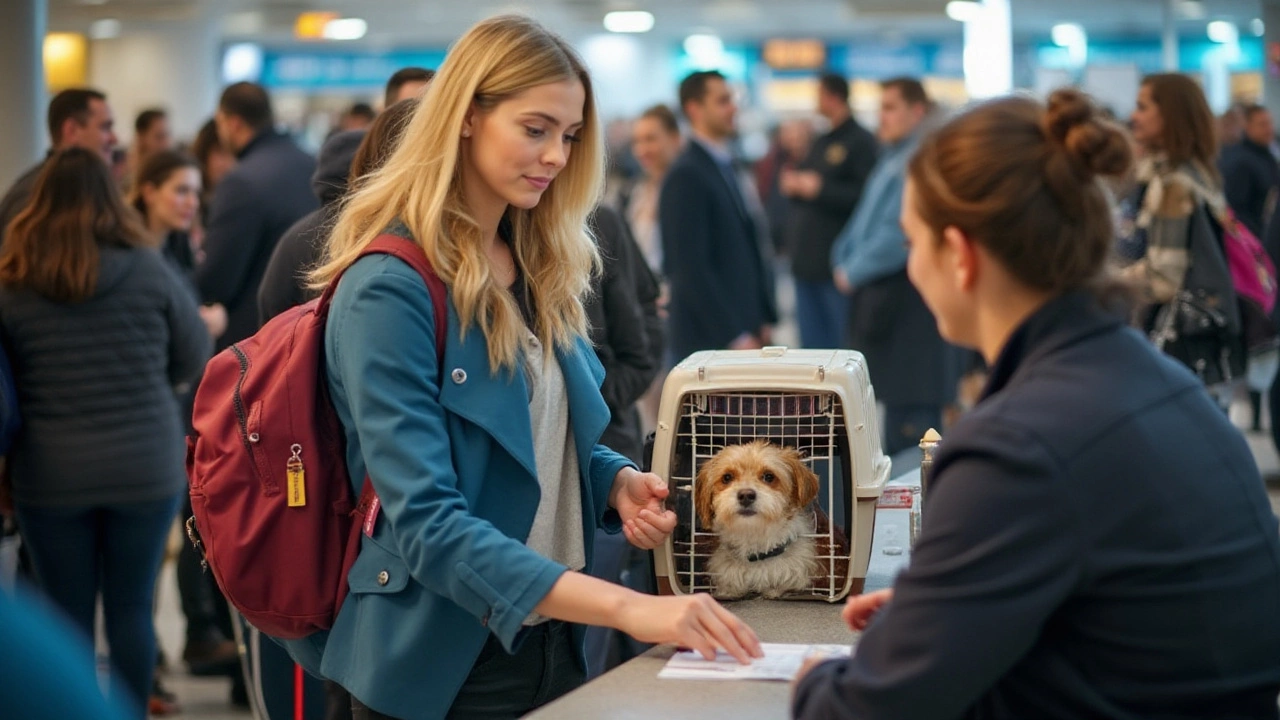Airlines with Pet Cargo – Your Guide to Flying Pets Safely
If you’re planning a move, a vacation, or a family visit and your dog or cat can’t travel in the cabin, cargo is the only option. Knowing which airlines actually ship pets, what they charge, and how to keep your companion calm can turn a stressful experience into a smooth one.
Top Airlines That Ship Pets in Cargo
Most major carriers in the UK and Europe have a dedicated pet cargo program. British Airways, KLM, and Lufthansa all allow dogs and cats in the temperature‑controlled hold, provided the animal meets size and health requirements. American carriers like Delta and United follow similar rules, often requiring a health certificate issued within ten days of travel.
When you compare options, look at three things: price, route availability, and handling reputation. For example, KLM’s “Pet Hotel” service includes a brief stay before and after the flight, which many owners find reassuring. Lufthansa offers a Pet‑Plus service that provides a padded crate and a short acclimation period at the airport.
If cost is a primary concern, check out budget airlines that still allow cargo pets, such as Air France‑KLM’s partner carriers. They typically charge a flat rate plus a weight‑based fee, and the total can range from £80 to £250 per pet, depending on distance.
Tips to Keep Your Pet Comfortable During Cargo Travel
Start with a crate that meets IATA standards: sturdy, well‑ventilated, and large enough for your pet to stand, turn, and lie down. Place a familiar blanket or toy inside to reduce anxiety. A short walk before the flight helps burn off excess energy.
Hydration is crucial. Offer water right up to the drop‑off time, but avoid a full belly that could cause discomfort. Some owners add a water‑absorbing pad to the bottom of the crate to keep paws dry.
Schedule a vet check‑up at least a week before you fly. A health certificate is usually mandatory, and the vet can advise on whether a mild sedative is safe—most airlines actually discourage sedation because it can affect breathing in the cargo hold.
When you drop your pet at the airport, ask for a written confirmation of the crate’s placement and the flight’s temperature range. Most carriers keep the hold between 5 °C and 30 °C, which is safe for healthy adult dogs and cats.
After landing, collect your pet as soon as possible. A quick walk and a glass of water will help them recover from the stress. If you’re unsure about any step, our post “Pet Travel Costs: What to Expect When Flying With Your Furry Friend” breaks down fees and hidden charges in plain English.
Flying your pet in cargo isn’t as scary as it sounds. By choosing a reputable airline, preparing the right crate, and following these practical tips, you’ll give your dog or cat the best chance at a calm, safe journey. Ready to book? Check the airline’s pet policy page, compare prices, and pack that favorite blanket—your pet’s next adventure is just a flight away.
Posted By Bryndle Redding On 24 Nov 2024 Comments (0)
Airlines That Allow Pets in Cargo: A Guide for Pet Owners
Traveling with your pet can be daunting, but many airlines allow pets to travel in cargo, providing a safe journey for your furry friends. This article explores which airlines offer pet cargo services and shares essential tips to ensure a smooth trip. With a focus on preparation and safety, you'll find detailed information about airline policies, pet care during flights, and what to expect when your pet travels in cargo. Whether you're relocating or going on vacation, this guide will help you choose the right airline for your pet's needs.
READ MORE